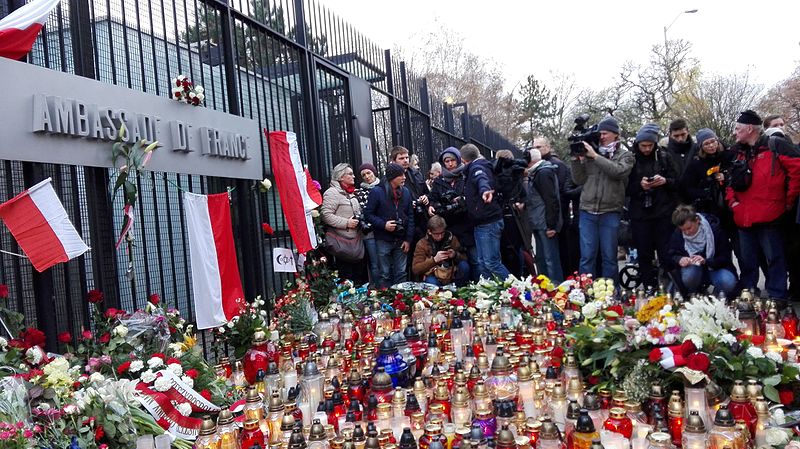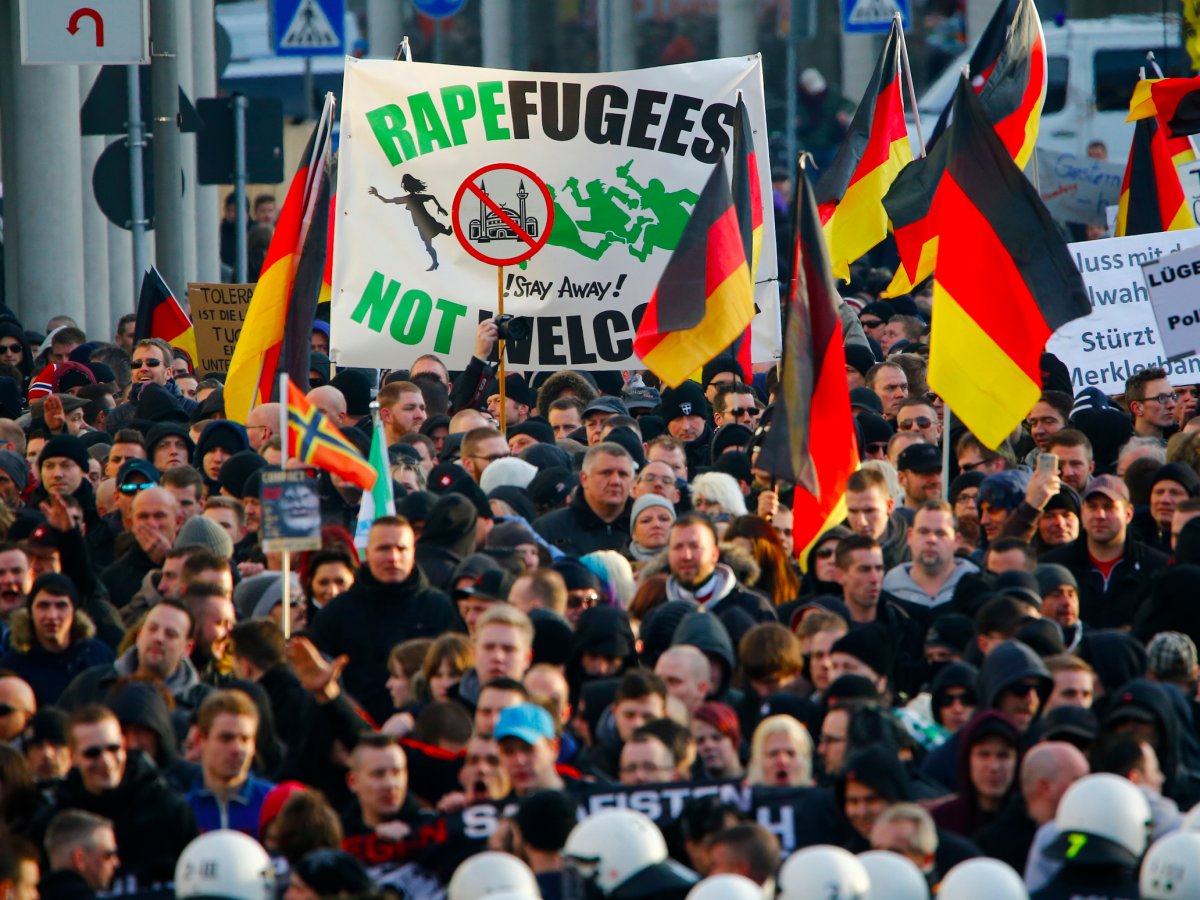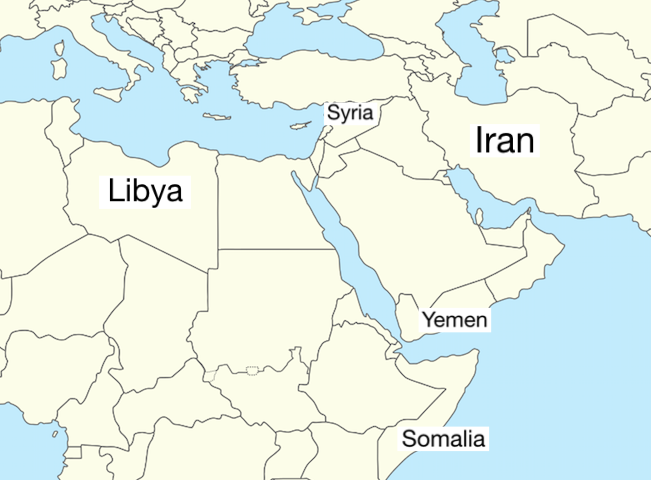Preface
On June 26, 2018, President Trump’s controversial travel ban was upheld by the Supreme Court in a 5-4 vote. The ruling was a huge victory for the President, as the Supreme Court confirmed the legitimacy of the ban. The ban prohibiting travel from 7 countries – Iran, Libya, North Korea, Somalia, Syria, Yemen, and Venezuela — has been a topic of fierce debate.
While the ban on North Korea and Venezuela has never been a serious topic of debate, the ban on the other 5 countries has been a highly disputed topic, as these five countries are predominantly Muslim.
As such, one could question Trump’s motivation on instilling the travel ban. Was he religiously motivated against Muslims? Or was he really protecting the interests of the American people?
This article will address these questions. Note that the arguments presented only pertain to the ban on the five predominantly Muslim countries and have no relevance to North Korea or Venezuela. The travel bans for North Korea and Venezuela have not resulted in any legitimate backlash.
- Travel from North Korea had already been severely limited, considering the circumstances in North Korea with its dictatorship and nuclear arsenal. In my previous article titled, A Nobel Peace Prize for Trump?, I talked about how North Korea is denuclearizing, but it will still be a long time before travel between the United States and North Korea will be allowed. Nevertheless, this ban will most likely not hinder any peace talks, as this ban is nothing new for North Korea
- In Venezuela, the travel ban only affects government officials and their immediate families. The United States’ relationship with Venezuela had been deteriorating since the 1990s and this ban was certainly not a surprise.
The Controversy Over the Travel Ban
Overall, the travel ban does not affect any lawful permanent resident of the United States, anyone who has a valid document other than a visa granting admission to the U.S (boarding foil, advanced parole document), or anyone granted asylum by the US, previously admitted as a refugee, or granted other forms of relief or protection regardless if they are from any of the restricted countries.
However, the ban on five predominantly Muslim countries has faced major criticism and backlash from the Democratic Party. Many liberals argue that the ban was racially and religiously motivated, claiming that Trump is anti-Islam. While Trump’s ban may coincidentally have included five predominantly Muslim countries, all these countries have been linked to terrorist groups in the past.
Terrorist organizations have had unprecedented relevance in the 21st Century, killing and injuring countless innocent victims. Given the presence of organizations such as Al Qaeda and ISIS, preventing a terrorist attack has become a topic of serious concern. Hence, one could argue that Trump issued this travel ban to prevent a potential terrorist attack on American soil and protect the interests of the United States.
Not a “Muslim Ban”
Before discussing the President’s motivation for the travel ban, let’s discuss the primary argument against the ban. Those against the ban will argue that the ban was religiously motivated and have labeled it a “Muslim Ban”. They believe the ban is an example of the President’s anti-Islam views. Unfortunately, the argument against the ban is invalid.
While the President’s travel ban may include five predominantly Muslim countries, it is in no way a Muslim ban nor is it religiously motivated. The worldwide Muslim demographic supports this.
According to Wikipedia, Islam is the second largest religious group with around 1.8 billion followers, making up around 24% of the global population. The countries with the most Muslims are Indonesia, Pakistan, India, Bangladesh, Nigeria, and Egypt. These six countries account for around 54% of the global Muslim population. The 5 countries on Trump’s banned list account for less than 9% of Muslims worldwide. The ban includes less than 9% of the global population, a “Muslim Ban” would account for much more Muslims and probably include the likes of Indonesia, Pakistan, and/or India.
Additionally, there are 49 predominantly Muslim countries in the world, including Indonesia, Pakistan, and Bangladesh, yet Trump’s travel ban accounts for just five of them.
The argument that Trump’s travel ban is a Muslim ban ignores Islamic demographics. The President’s motivation for the ban could not have been religiously motivated. Instead, the ban was issued to address a matter of national security and to protect the interests of the American people.
Refugees: The 21st Century Trojan Horse
Since the deadly attacks of September 11, 2001, terrorism has become one of the most significant national security concerns, with terrorist groups such as Al Qaeda and ISIS existing as imminent threats. President Trump’s travel ban is an apparent attempt to address the security concerns these groups pose and prevent a future terrorist attack on American soil. In recent times, global terrorist groups have used the global migrant crisis to carry out attacks, acting as refugees to enter foreign soil. The ban was issued in an attempt to prevent terrorists from entering the United States, and given the history of refugee linked terrorism since the 2015 migrant crisis, President Trump’s travel ban is validated as a measure that will help ensure the security of the United States.
Since the European Migrant Crisis, refugee linked terrorism has been unprecedented. Due to the impending crisis in the likes of the Middle East and Africa, many have fled their respective countries and have entered Europe as refugees. The European Union has accepted upwards of a million refugees, infamously forcing its member states to accept refugees. While the European Union should be applauded for attempting to solve this humanitarian crisis, the results have been severe. Throughout Europe, refugees have constantly been involved in terror attacks.
The November 2015 Paris attacks are the most tragic example in the outbreak of refugee linked terror attacks. On November 13, 2015, a series of coordinated terrorist attacks across Paris occurred. The terrorists acting under the influence of ISIS killed 130 civilians and left hundreds more injured. Two of the attackers had entered Europe via the Greek Island of Leros, disguised as Syrian refugees. Both attackers, Ahmad al-Mohammad and M al-Mahmod, had blown themselves up outside the Stade de France Stadium. They navigated Europe on ferries with other refugees. At least one of them had lied about his identity and had fake documents. Both men had entered Europe as refugees seemingly to flee the crisis in Syria, only to cause mayhem in Paris. The worst part, authorities had no way of tracking these men or identifying them before the attack. They had blended inconspicuously along with the million refugees that had entered Europe.

Germany, arguably the most influential country in the European Union, has accepted upwards of 140,000 refugees and like France, has seen quite severe results.
On July 18, 2016, Muhammad Riyad, a refugee of unknown origin, wounded five on a train in Würzburg with an ax and knife. The attack was claimed by ISIS. In December 2016, Anis Amri, a refugee of Tunisian descent plowed through a Berlin Christmas market killing 12 and injuring 49. Anis Amri had a criminal history in Germany, Italy, and Tunisia, and reportedly used 14 different aliases and posed as a citizen from Syria in order to be granted refuge. The attack was also claimed by ISIS. Less than a week later, Mohammad Daleel, a Syrian refugee, blew himself up in Ansbach, Germany killing 15. Footage on his phone later revealed he had pledged allegiance to ISIS leader, Abu Bakr al-Baghdadi.
Not only were refugees consistently associated with terrorism, police raids foiled numerous planned terrorist attacks by refugees. In February 2016, an Algerian couple who had applied for asylum as Syrian refugees were arrested for reportedly planning a terrorist attack. The couple had links to ISIS. In November 2017, six Syrian refugees were arrested for planning an attack using weapons and explosives. All six men had entered Germany in 2016 and were working on behalf of the Islamic State. Christian Hartwig, a spokesman for the Frankfurt prosecutor’s office, said the men had been posing as refugees. As Germany continued to allow refugees into their country, they saw unmatched levels of terrorism, as refugees were constantly involved.
Not all European countries have accepted refugees, and those that refused them have not experienced any forms of refugee linked terrorism. Poland, the Czech Republic, Hungary and other countries have famously refused to accept any Islamic refugees during the European Migrant Crisis. Unlike nearby Germany or France, their policy on refugees produced less tragic results. Since 2015, Poland has had exactly zero Islamic terror attacks. Poland put the security of their people first and their policy on refugees allowed them to have zero casualties at the hands of refugee terrorism. The same is true in the likes of the Czech Republic and Hungary.
With every refugee involved terrorist attack (or lack thereof), the correlation between the acceptance of refugees and terrorism could no longer be ignored by the European Union. While the nations that welcomed thousands of refugees saw a dramatic increase in terrorism, the nations that refused saw very little or no attacks.
In 2016, the European Union finally started to realize the consequences of their actions. In February 2016, the head of Germany’s domestic intelligence agency, Hans-Georg Maassen, said the Islamic State, also known as ISIS or ISIL, was using the wave of newcomers to infiltrate Europe. He continued by saying that the authorities in Europe have “seen repeatedly that terrorists are being smuggled in, camouflaged as refugees.” Maassen essentially admitted that his country’s refugee policy had failed, by agreeing to the notion that refugee linked terrorism was very real. Germany, probably the most powerful country in the European Union, had finally accepted the link between refugees and terrorism. The European Union finally recognized that the million accepted refugees, brought along possibly hundreds of potential terrorists into Europe. The worst part? The European Union had no way of tracking these terrorists or telling a “good” refugee from a terrorist. Europe was heading towards a crisis with hundreds of terrorists across Europe and no way of finding them.
Given this unfortunate connection between refugees and terrorism, Trump’s only option was to issue a travel ban with intention of protecting the United States from potential terrorism, secure American borders, and immediately address this epidemic. He is validated in issuing this travel ban, as it is his job to protect the interests of the American people.
To Make The Situation Worse…
While terrorism was President Trump’s biggest concern when issuing the travel ban, refugees also pose an entirely different problem that has European nations on the brink of a Civil War. As refugees have flooded into Europe, they have continuously been the perpetrators in Europe’s economic and social problems.
While this problem deserves an entire article in itself, I will summarize this problem briefly in this article, and a future article will discuss the unprecedented civil unrest caused by refugees in great detail.
Economically, refugees have taken advantage of the welfare system and have footed their bill on European citizens. Welfare was originally designed for people who couldn’t work or be provided for and later developed into a system that provided anyone economic aid until they could get “back on their feet”. Refugees have turned this whole system upside down. Many, if not all of them, are totally capable of working but simply refuse. Most of them live off welfare and are an economic strain on Europe.
Socially, the situation is even worse. With many refugees refusing to work and relying on welfare, they have inhabited some of the poorest neighborhoods. As a result, a wave of economic ghettos has risen and gangs have formed. These gangs have no regard to any of the pre-established social order and create much social unrest. As such, murder, rape, and theft rates have risen astronomically. The connection between migrant immigration and crime rates cannot be ignored. Additionally, migrants are unwilling to adapt in any way to European culture, and constantly push their ideas and beliefs on locals, often forcefully. The migrant culture across Europe has caused destructive civil turbulence and has pushed Europe on the brink of a civil uprising.
At first, Europeans welcomed migrants with open arms, hoping the two groups could live together harmoniously. Just a couple of years later, Europeans have become fed up with migrants and have pushed Europe into turmoil. The rise of the “far-right” movement is no coincidence. The movement has gained an extreme amount of relevance of recent due to their anti-refugee policy. Europeans are no longer welcoming refugees, as their economic and social toll has left them frustrated. There have been numerous incidents of citizens rising up and confronting refugees themselves. While these attacks on refugees should be condemned, it is a very telling sign. Ordinary citizens have become disgusted with refugee crime and have decided to deal with the issue themselves. A civil war in Europe between citizens and refugees may be imminent.
The threat of terrorism has enough justification to issue a travel ban, but the threat of civil destruction similar to the events in Europe is just another reason why the President’s travel ban is completely justified.

Protecting American Soil
The situation in Europe set a harsh example for the United States and the rest of the world. President Trump had no intention of having the events in Europe replicated in the United States. With the European Union and the world pressuring the United States to accept an extreme amount of refugees, President Trump had a decision to make. While I am sure the White House feels for the million refugees fleeing their respective countries, the White House had to address the correlation between refugees and terrorism.
The President’s first priority is to protect the United States and ensure the safety of American citizens, and he realized that the acceptance of thousands of refugees would do the opposite. The ban put the safety of the American people first and kept the United States safe from the threat that had doomed Europe. It was an unfortunate, but necessary measure to take in order to protect the interests of the United States.
Not all refugees are terrorists, but given what happened in Europe with terrorists posing as refugees, it is very risky to accept refugees onto U.S. soil. Screening has clearly failed in Europe and we have no way of identifying the refugee versus the terrorist.
In the future, if the United States discovers a plausible way to identify terrorists from refugees, the United States may reconsider its travel ban. Unfortunately, that may be a long way away due to the numerous occasions where terrorists have faked identifications in order to enter countries as refugees.
In addition, the social turmoil that has occurred in Europe, that has many European countries on the brink of a social upheaval, should really scare the United States. The possible implications socially have to be considered when discussing the possibility of opening up the United States to refugee migration.
The safety of the American people always come first, and the President’s travel ban does just that by addressing the crisis of refugee linked terrorism.
Feel free to read through the articles and give your thoughts. The editor would love to debate and discuss your thoughts.
Featured Image via Flickr
Content featured on Red in A Sea of Blue is available without charge to any eligible news publisher that can provide a large audience. For licensing opportunities of original content, please email [email protected]


Do you think President Trump will ever let refugees from these countries in?
As of right now, No as screening is too unreliable and hasn’t done a good job detecting potential terrorists. Additionally, the implications socially of letting in refugees is drastic (a later article will go into great detail), which is another factor to consider. If screening becomes more reliable though, look for Trump allowing more refugees in, but still a relatively small amount in comparison to Europe.